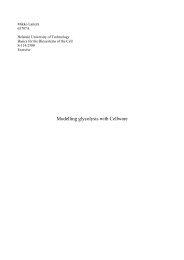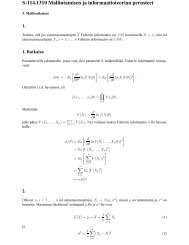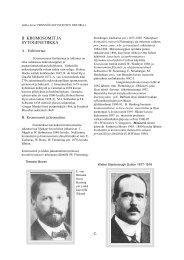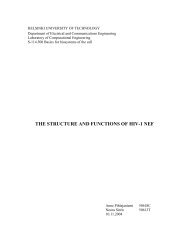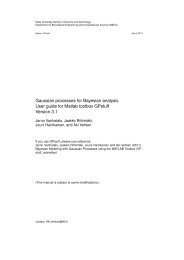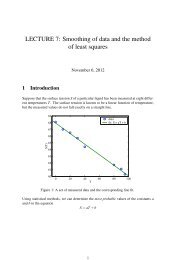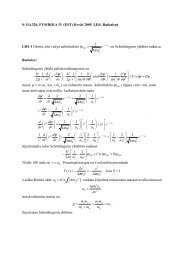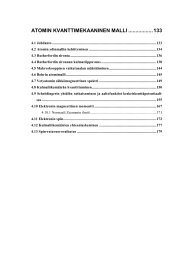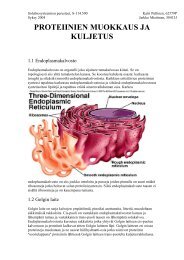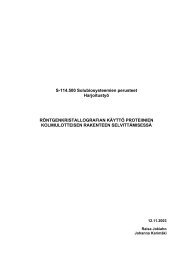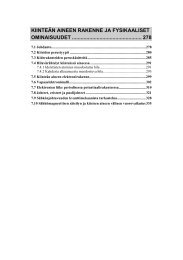LECTURE 3: Polynomial interpolation and numerical differentiation
LECTURE 3: Polynomial interpolation and numerical differentiation
LECTURE 3: Polynomial interpolation and numerical differentiation
You also want an ePaper? Increase the reach of your titles
YUMPU automatically turns print PDFs into web optimized ePapers that Google loves.
Example.<br />
Find the Newton form of the interpolating polynomial for the following table of values:<br />
x 1/3 1/4 1<br />
y 2 −1 7<br />
We will construct three successive polynomials p 0 , p 1 <strong>and</strong> p 2 . The first one is<br />
p 0 (x)=2<br />
The next one is given by<br />
p 1 (x)= p 0 (x)+c 1 (x−x 0 )=2+c 1 (x−1/3)<br />
Using the <strong>interpolation</strong> condition p 1 (1/4)=−1, we obtain c 1 = 36, <strong>and</strong><br />
p 1 (x)=2+36(x−1/3)<br />
Finally,<br />
p 2 (x)= p 1 (x)+c 2 (x−x 0 )(x−x 1 )<br />
= 2+36(x−1/3)+c 2 (x−1/3)(x−1/4)<br />
The <strong>interpolation</strong> condition gives p 2 (1)=7, <strong>and</strong> thus c 2 =−38.<br />
The Newton form of the interpolating polynomial is<br />
p 2 (x)=2+36(x−1/3)−38(x−1/3)(x−1/4)<br />
Comparison of Lagrange <strong>and</strong> Newton forms<br />
Lagrange form<br />
p 2 (x)=−36(x−1/4)(x−1)<br />
− 16(x−1/3)(x−1)<br />
+ 14(x−1/3)(x−1/4)<br />
Newton form<br />
p 2 (x)=2+36(x−1/3)−38(x−1/3)(x−1/4)<br />
These two polynomials are equivalent, i.e:<br />
p 2 (x)=−38x 2 +(349/6)x−79/6




